Air Operations, Bismarcks VMB-413, VMB-423, and VMB-443 PBJs mount what will be the final attack of the war against the bypassed Japanese base at Rabaul.
Air Operations, CBI
CHINA
- 9 341st Medium Bomb Group B-25s and a small number of 14th Air Force fighter-bombers attack rail targets, a motor-vehicle convoy, and a number of targets of oppotunity.
[  | |   ] ]
Air Operations, East Indies XIII Bomber Command B-24s attack Laha, Ceram.
[  | |  ] ]
Air Operations, Japan - After diverting from Kokura because of obscuring clouds over that city, the 509th Composite Bomb Group B-29 Bock’s Car, piloted by Maj Charles W. Sweeney, drops an atomic bomb on Nagasaki at 1058 hours. At least 24,000 Japanese are killed.
- FEAF B-24s attack the Iwakuni airfield on Honshu and military stores at Matsuyama.
- FEAF B-25s attack Noma, the Kanoya airfield complex on Kyushu, shipping in Beppu Bay, various targets at Tsurusaki, and various targets in the Tsushima Strait area.
- FEAF B-25s and A-20s (in their first appearance over Japan) also attack the Kanoya airfield complex on Kyushu and industrial targets at Kushikino, Minato, and Shimahira.
- More than 200 FEAF P-47s and P-51s attack a broad array of targets on Kyushu, Shikoku, and in the northern Ryukyus.
- After reconnaissance aircraft locate a large concentration of transport aircraft and bombers in the Hokkaido-northern Honshu area, especially at the Misawa airfield on Honshu, Task Force 38 and Task Group 37.2 carrier aircraft mount an all-out effort to destroy them. It is revealed after the close of hostilities that the Japanese plan to use many of these airplanes to drop or land as many as 2,000 troops on USAAF B-29 bases in the Mariana Islands. An estimated 251 aircraft are destroyed on the ground and another 144 are damaged.
- At 1456 hours, a kamikaze severely damages a US destroyer serving as a radar picket between Task Force 38 and the coast. Losses are 48 killed and 66 wounded.
- A VF-16 F6F downs a C6N 'Myrt' reconnaissance plane 42 miles from Task Force 38 at 1235 hours.
- A VF-6 F6F pilot downs a B5N 'Kate' torpedo bomber 8 miles from Task Force 38 at 1300 hours.
- VF-88 F6Fs down 2 B7A 'Grace' torpedo bombers at sea at 1500 hours.
- 2 VF-27 F6Fs down an A6M Zero at sea at 1600 hours.
- A VF-86 F6F downs a B7A 'Grace' torpedo bomber over Task Force 38 at 1615 hours.
- A VBF-1 F4U downs a D4Y 'Judy' dive bomber at sea at 1700 hours.
- A VF(N)-91 F6F downs 2 D4Y 'Judy' dive bombers at sea at 1835 hours.
- During the night 95 315th Very Heavy Bomb Wing B-29s attack an oil refinery at Amagasaki.
[  | |   ] ]
Air Operations, Philippines - XIII Bomber Command B-25s and XIII Fighter Command P-38s support US 8th Army ground forces on Luzon.
- VMB-611 PBJs attack targets on Mindanao under the guidance of a captured Japanese Army lieutenant.
[  | |   ] ]
Air Operations, Pacific - The second atomic bomb, named 'Fat Man', is dropped by the US Air Force on Nagasaki. The aircraft is a B-29 christened Great Artist and commanded by Maj Charles Sweeney. Casualties total 23,753 dead and 43,020 injured, many of whom die later. This bomb is a plutonium fission device of the type tested at Alamagordo. The attack is less devastating than at Hiroshima even although the bomb is of the technologically more advanced plutonium type.
- In an effort to destroy Japanese aircraft which has been moved to northern Honshu, US and British carrier-based planes attack airfields in continuous waves. 34 Allied planes are brought down, but 397 Japanese aircraft are destroyed and 320 damaged.
[  | |   ] ]
Britain, Home Front The death of Sir Bernard Partridge, political cartoonist of 'Punch' magazine, at age 83 is announced.
[  | |   ] ]
China The Russians open their operations against the Japanese. Their objectives are the occupation of Manchuria and North Korea, the Kuril Islands and Southern Sakhalin, and the destruction of the huge Japanese Kwangtung Army numbering about 1,000,000 men. Against the Japanese forces the Russians deploy 1,158,000, grouped into the 1st and 2nd Far East Fronts and the Transbaikal Front, with 26,000 guns and mortars, 5,500 tanks and self-propelled guns and 3,900 aircraft. The Russian troops attack from the Maritime Province and penetrate into Manchuria and head straight for Mukden.
Chinese paratroopers are dropped on the Canton-Hankow rail line.
[  | |   ] ]
Japan, Home Front Towards midnight Emperor Hirohito calls the Supreme Council together and tries to make the military leaders accept the proposed surrender. But they will not. At 3a.m. the meeting breaks up with nothing more decided that a cautious sounding of the possibilities of peace through Sweden and Switzerland.
The Japanese Supreme War Council agrees late that night that they should accept the Potsdam Declaration if the monarchy is to be allowed to be preserved. Some objections from the military are overruled by the Emperor himself.
[  | |   ] ]
Pacific - Over the next week the British and American carriers return to the attack after a replenishment period. The carrier Wasp (CV-18) and the battleship Duke of York have joined the force. Adm Sir Bruce Fraser is now present to command the British contingent. Airfields and shipping on Honshu and in the waters nearby are attacked with great effect and there is a bombardment of Kamaishi.
- US ships damaged in action off Honshu, Japan include the destroyer Borie (DD-704) by a suicide plane and the destroyer John W. Weeks (DD-701) by accidental US naval gunfire.
- Japanese ships sunk off northern Honshu, Japan by US and British carrier-based aircraft include the minesweeper No. 33 and frigates Amakusa and Inagi.
[  | |   ] ]
United States, Policy Truman broadcasts threatening Japan with destruction by atomic bombs.
[  ] ]
Images from August 9, 1945
Atomic Bomb Hits Nagasaki
|
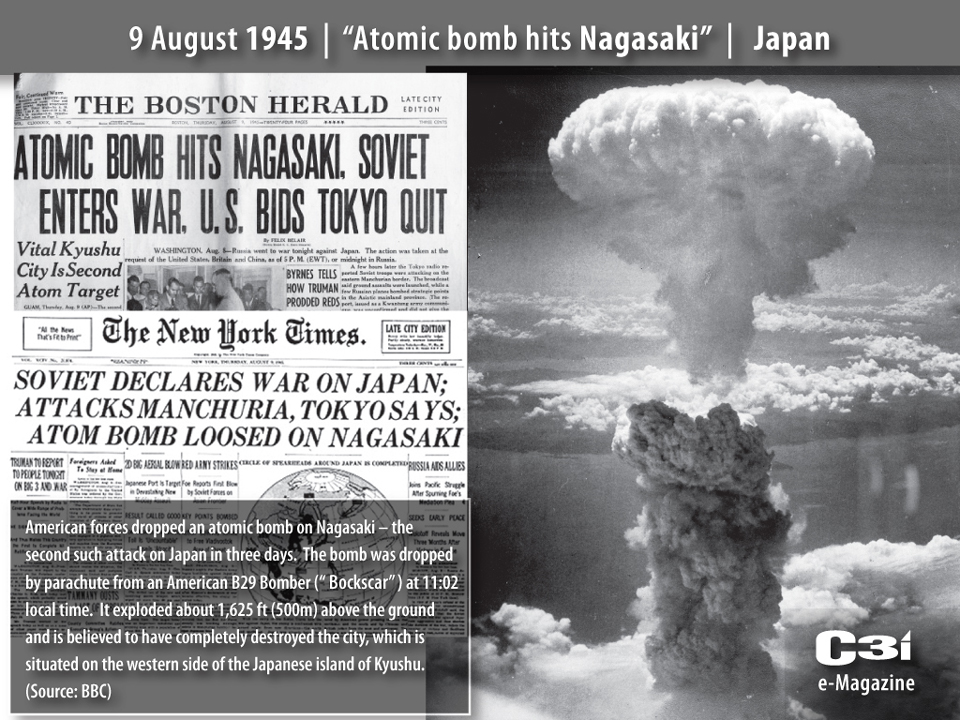 |
|
B-29 Drops a Plutonium Bomb
|
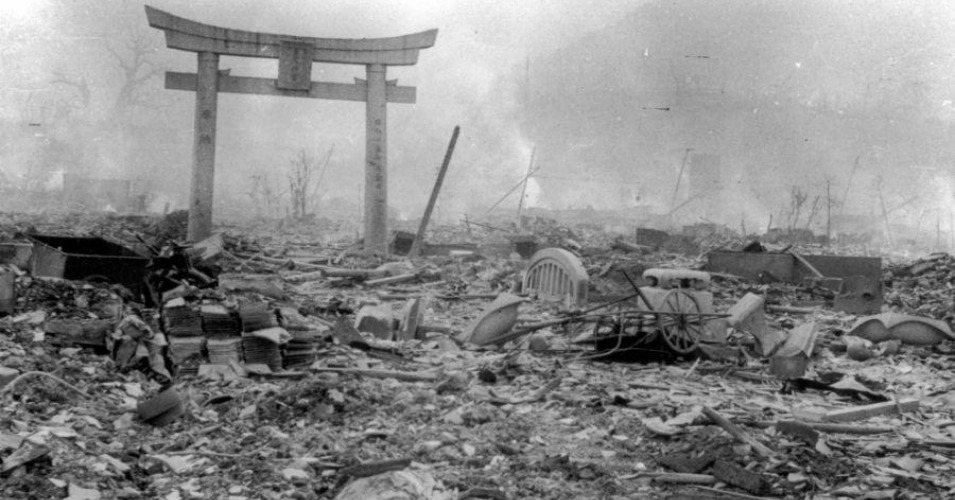 |
|
Atomic Bombing of Nagasaki
|
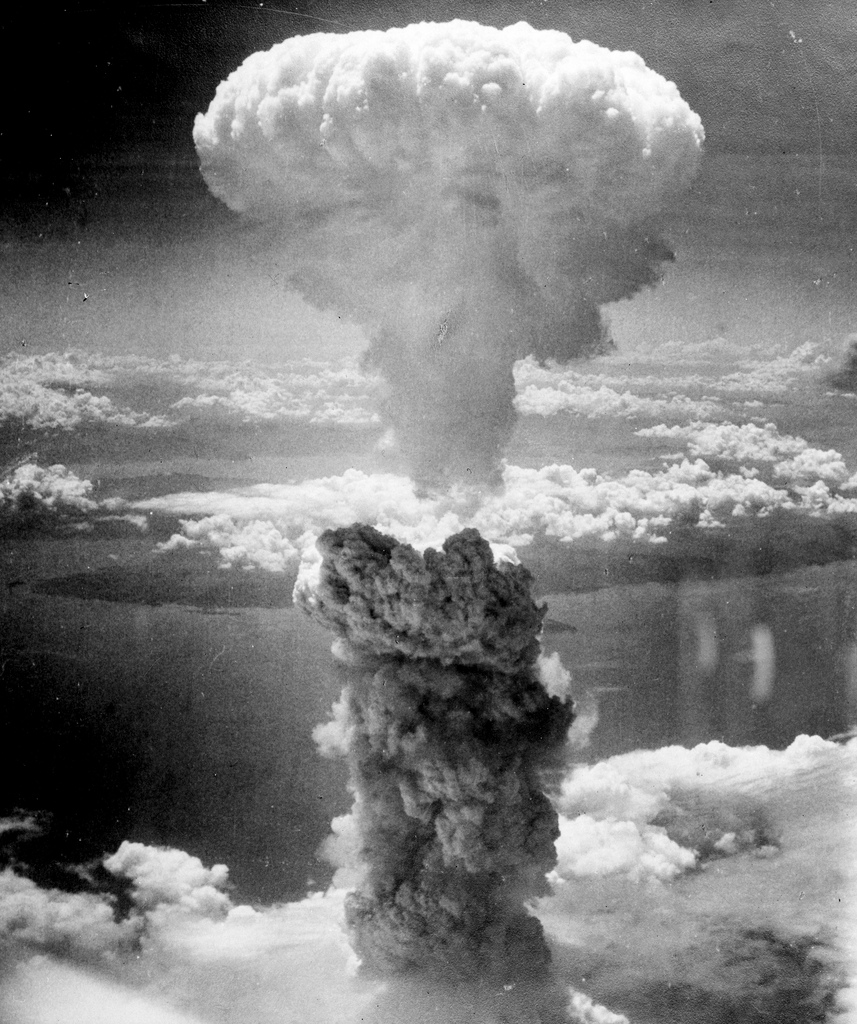 |
|
Destruction of Nagasaki
|
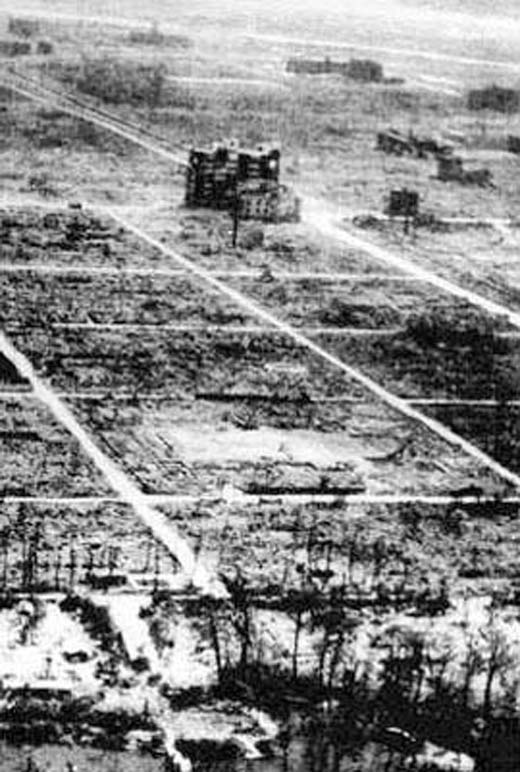 |
|
Atomic Cloud over Nagasaki
|
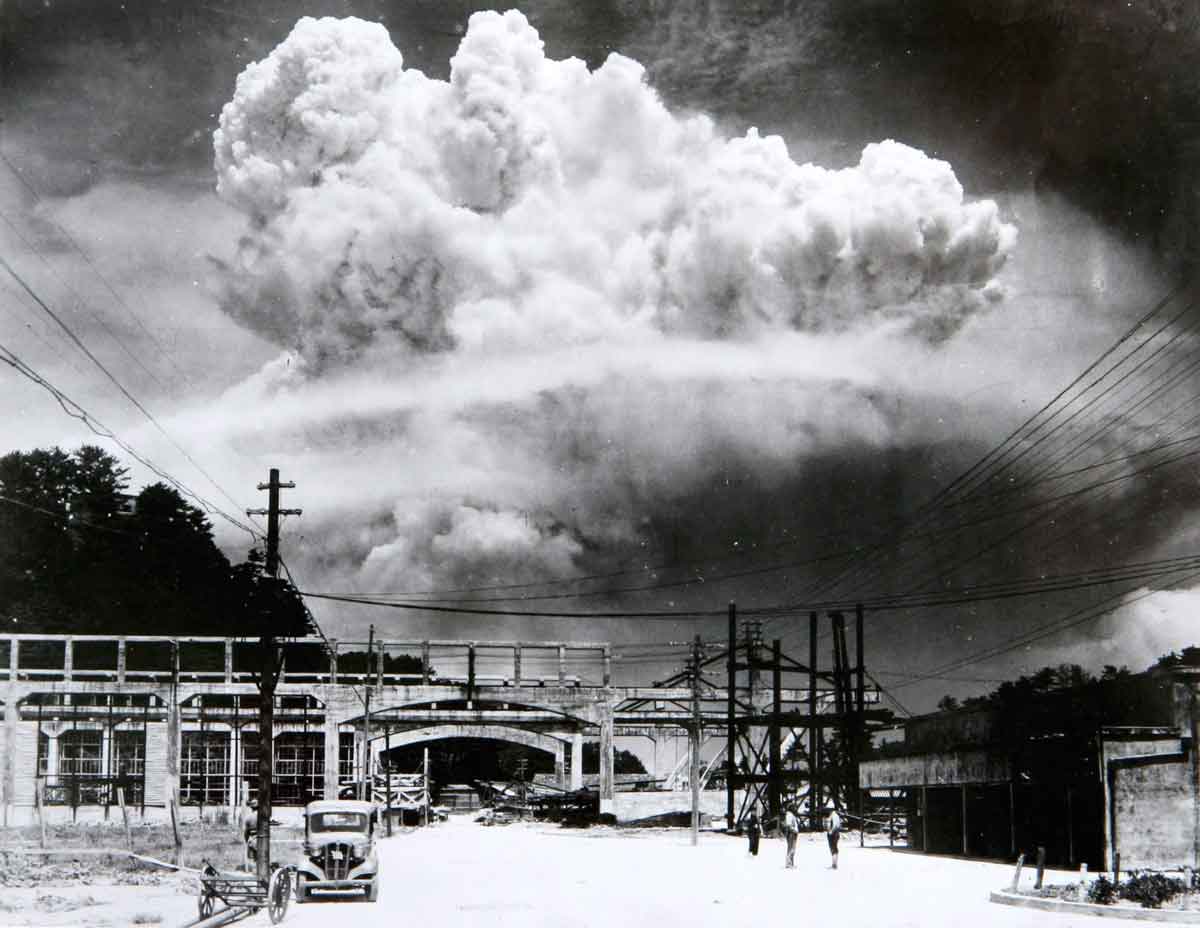 |
|
Nagasaki, Before and After
|
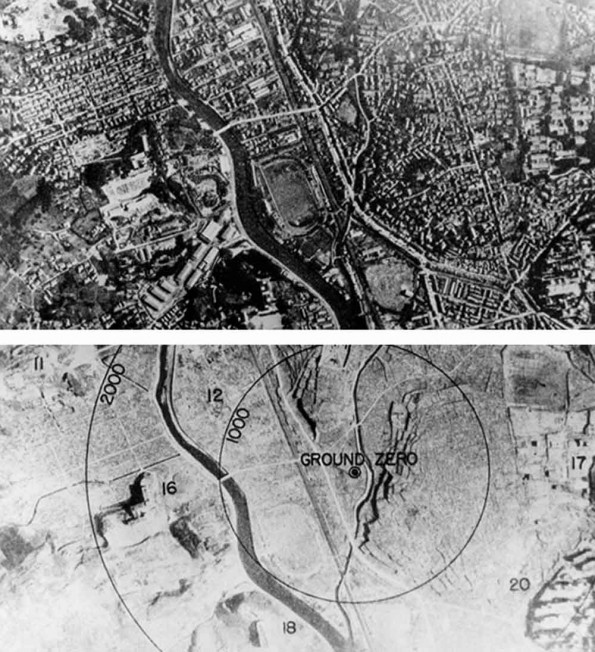 |
|
Last Battleship Bombardment of the War
|
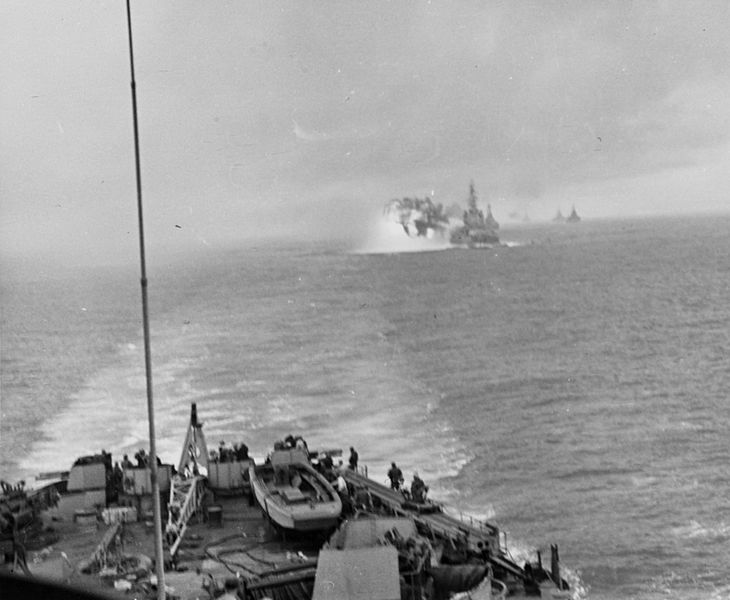 |
|
F4U Corsairs on Okinawa
|
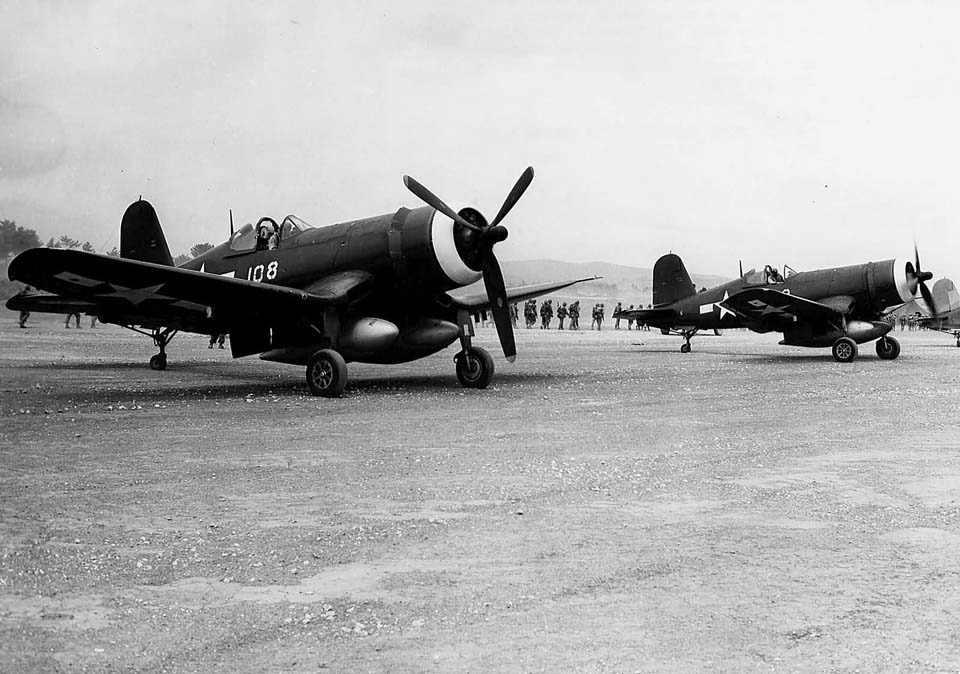 |
|
|







